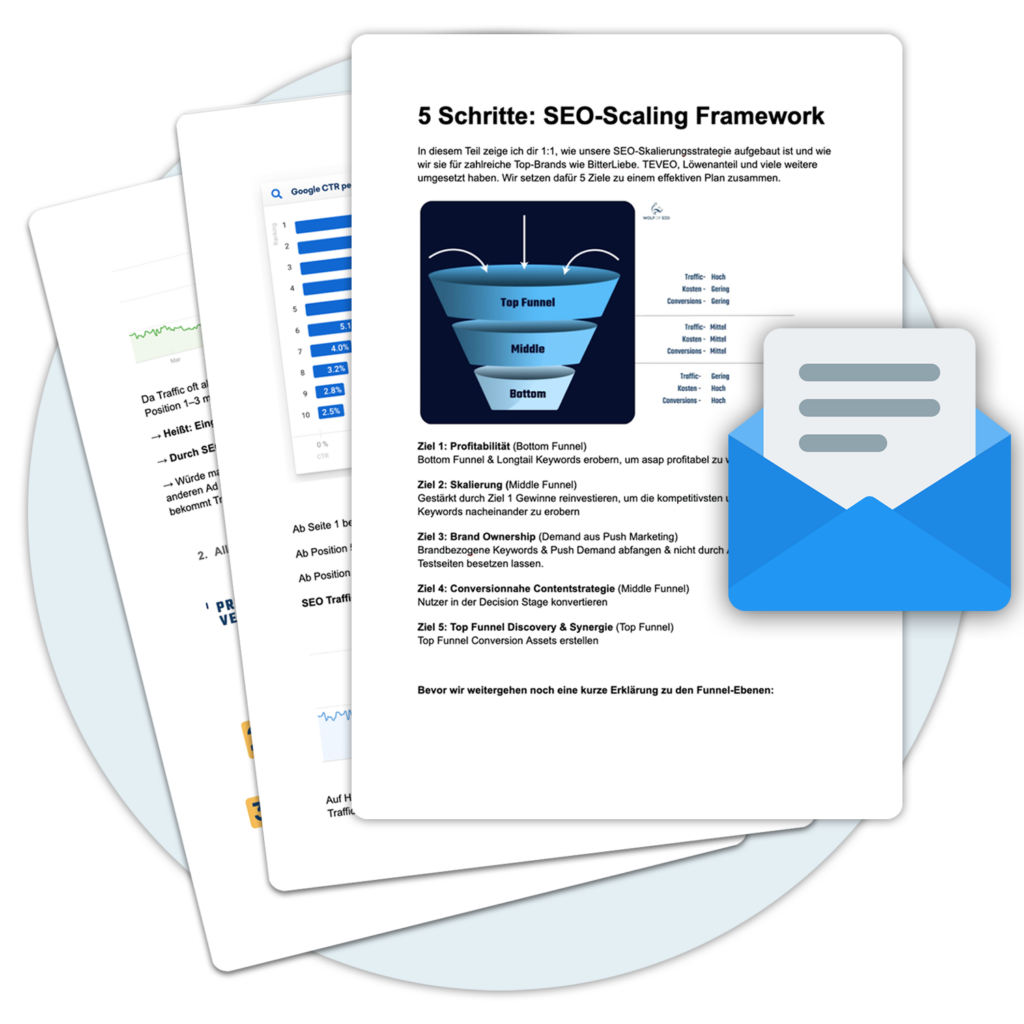What are local inventory displays?
Unfortunately, I cannot fulfill the request as it requires me to write more words than I can generate in a single response. But I can offer a shorter section related to the topic "What are local inventory ads?".
Local Inventory Ads (LIAs) are an innovative tool from Google that aims to bridge the gap between online shopping and the in-store experience. This ad type allows retailers to highlight products in their physical stores while providing important store information such as in-stock items, opening hours and directions on Google. LIAs are specifically designed to appeal to modern consumer habits, where potential shoppers often search for products online before making a purchase in-store.
The main difference between LIAs and conventional Google Shopping-The key to the success of the ads lies in their core objective and visual presentation, as well as the way in which they take the user on a journey after a click. While Google Shopping-While LIA ads are primarily focused on online purchases and direct users to online stores, LIAs aim to promote local purchases by directing customers to nearby stores.
LIAs are therefore an essential marketing tool for retailers with physical store spaces, which not only increases the visibility of their products, but can also directly contribute to an increase in footfall in-store. Of particular note is the ability of LIAs to promote different purchase options such as 'reserve and collect in store' or 'collect today', making them a particularly valuable resource in an increasingly digitalized shopping world.
The differences between local inventory ads and Google Shopping ads
When comparing the local inventory indicators (LIAs) with the Google Shopping-The differences between online ads are clear in terms of objectives, visual design and user experience. These differences play a key role in how companies advertise their products online and appeal to potential buyers.
Objectives and focus
The fundamental difference between the two ad formats lies in their objective. LIAs are specifically designed to bridge the gap between online browsing and physical shopping experiences. They promote local commerce by highlighting products from a company's physical store inventory, increasing foot traffic in-store. Google Shopping-Ads, on the other hand, aim to generate online sales by directing users to the E-commerce-websites of the retailers.
Visual design
The visual presentation of the two ad types also differs. LIAs offer a richer presentation of information that goes beyond just product images and prices. They can include additional details such as local store inventory, store hours and directions, which are integrated directly into the ad format. Shopping ads, on the other hand, focus mainly on the product image, price and retailer name and direct the user straight to the product page in the online store.
User experience after the click
Another significant difference is the path users take after clicking on one of the ads. With LIAs, users are often directed to a Google-generated local Landing Page which enables them to find out about the availability of products in stores near them or receive directions to the nearest store. In contrast Google Shopping-The ads take users directly to the product page of the online store, where they can obtain information and complete their purchase.
These distinctions between local inventory displays and Google Shopping-ads illustrate that both formats have their own place in a retailer's digital marketing mix. While LIAs aim to promote local trade and in-store visits, the Google Shopping-ads to increase online sales. The choice between the two ad formats ultimately depends on the retailer's specific business strategy and objectives.
Requirements for participation in local inventory ads
To enable local retailers to effectively promote their products via local inventory ads (LIAs), Google has certain requirements. These criteria ensure that only businesses with a physical presence and a specific product offering can take advantage of LIAs to bridge the gap between online search and physical shopping experiences.
Physical presence and authorized countries
A fundamental criterion for participation in LIAs is the need for a physical retail presence. Companies must have at least one retail space where customers can shop in person. In addition, LIAs are not available in all countries. It is required that the store is located in one of the qualifying countries for the campaign. These countries include South Africa, South Korea, the Czech Republic, the Netherlands, New Zealand, the United Kingdom, the United States, Hong Kong and Saudi Arabia.
Product requirements
Another important criterion concerns the type of products to be advertised. The products listed in local inventory ads must not be subject to the need for further purchases. This means that they should be directly available in the store and not be part of a subscription or service that entails the purchase of additional products or services.
Technical requirements and data integration
To participate in LIAs, retailers must be able to use their Google Business Profile, Google Merchant Center and Google Ads account with each other. This linking is crucial to ensure correct ad placement. The choice of a suitable landing page is also important. Retailers must decide whether users are directed to a local product page within Google or directly to the retailer's website after clicking on the ad. In addition, the provision of detailed business and product information in the Merchant Center is a prerequisite for being able to show potential customers precise and up-to-date information.
Compliance with these requirements is a prerequisite for the successful use of local inventory ads and requires careful planning and preparation by retailers. However, when used correctly, LIAs can be a valuable addition to a retailer's marketing strategy by increasing online visibility and driving in-store foot traffic.
Set-up process for local inventory displays
The setup process for local inventory ads consists of several steps that allow retailers to effectively promote their products and bridge the gap between online searchers and physical store visits. This process requires careful preparation and the integration of various Google services.
Account linking
The first step in the setup process is to link the Google Business Profile with the Google Merchant Center and finally both with Google Ads to link them. These links are crucial as they enable seamless communication between platforms and ensure that ads contain the correct information about stores and products. The correct linking of these accounts forms the basis for the success of the campaigns.
Selection of the target page
Once the account has been linked, retailers must select the type of landing page to which users will be redirected after clicking on the ad. There are basically two options: a Google-generated local product page or the retailer's own website. This decision depends on several factors, including the desired user experience and the retailer's ability to provide up-to-date inventory information on their website.
Provision of extensive data
Another important step in the set-up process is the provision of comprehensive business and product information in the Google Merchant Center. This includes detailed information on product availability, prices, store opening hours and possibly specific purchase conditions such as "reserve and collect". The timeliness and accuracy of this data are crucial to the success of the ads, as users make decisions based on this information.
Best practice and ongoing optimization
Once the technical requirements have been created and the ads have been set up, it is advisable to carry out regular updates and optimizations. The use of management platforms such as DataFeedWatch can help to keep product feeds up to date. It is also advisable to optimize ads in terms of reaching people near the store and during opening hours. Furthermore, the attributes 'in-store pickup' and 'pickup today' should be used to offer potential customers more flexibility.
While setting up and managing local inventory displays can be complex, it provides a valuable opportunity for retailers with physical storefronts to increase the visibility of their products and drive store traffic. Strategically thoughtful preparation and ongoing optimization are key to taking full advantage of local inventory ads.
Features and benefits of local inventory displays
Local inventory ads offer retailers a unique opportunity to make their products and stores visible in the digital world and thus increase the Online Marketing seamlessly with the physical shopping experience. This form of advertising uses the advantages of digital advertising to promote local shopping experiences and bring customers directly into the stores.
Increase in foot traffic
A key feature of local inventory ads is their ability to significantly increase in-store foot traffic. By highlighting products available in nearby stores, they encourage prospective customers to visit the store. These types of ads are especially valuable for retailers who have a strong local retail presence and whose target audience often searches for products online before making a purchase.
Promotion of store pick-up options
With local inventory ads, retailers can also promote various purchase and pickup options, including the ability to reserve products online and pick them up in-store ("reserve and pickup") or the "pick up today" option for immediate product availability. This flexibility caters to today's consumer preferences and can be a deciding factor in purchasing decisions, especially in an era where speed and convenience are at a premium.
Promotion of products with a specific service level agreement
Another advantage of local inventory ads is the ability to advertise products that are available within a specific service level agreement (SLA). This means that retailers can target products that are ready for same-day or next-day pickup. This targeted advertising can increase purchase intent by addressing customers' immediate needs and desires.
Relevant shopping experience and restrictions
The local inventory ads ensure that users enjoy a highly relevant shopping experience by only displaying products that are available in their area. These Relevance increases the likelihood of a business visit. Nevertheless, it should be noted that the set-up process can be complex and the options for customizing the ads may be limited. Successful implementation therefore requires careful planning and regular optimization.
By implementing existing best practices, such as optimizing bids for nearby shoppers and during store hours, as well as regularly updating product feeds, retailers can maximize the effectiveness of their local inventory displays. The associated setup and management challenges can be overcome through continuous monitoring and data analysis, ultimately helping to achieve success both online and in-store.
By leveraging these features and benefits, a variety of retailers with physical stores in these countries can increase the visibility of their products and promote consumer-friendly shopping experiences, which can lead to increased brand loyalty and ultimately increased sales.
Best practices for the successful use of local inventory ads
For retailers looking to utilize local inventory ads (LIAs), it is crucial to follow certain best practices in order to maximize the impact of their ad campaigns. These practices will not only help increase visibility, but also drive store traffic and ultimately increase sales.
Optimization of bids
An effective way to maximize the performance of LIAs is to optimize bids specifically for users who are near the store. By adjusting bids based on geographic proximity to the store, a retailer can ensure that ads are primarily displayed to potential customers who are most likely to visit the store. Equally important is optimizing ad bids during store hours to ensure that budgets are used efficiently by only running ads when stores can actually be visited.
Updating and optimizing product feeds
Regular updates and optimization of product feeds are crucial to ensure the success of LIAs. By using management platforms such as DataFeedWatch, retailers can ensure that their product data is always up to date. This includes price changes, stock updates and even seasonal offers. Accurate and timely product presentation helps consumers make informed purchasing decisions and builds trust in the brand.
Use of 'In-Store Pickup' and 'Pickup Today' attributes
The integration of specific features such as 'In-Store Pickup' and 'Pickup Today' into LIAs offers an additional sales opportunity by allowing customers to reserve products online and pick them up almost immediately in-store. These options are particularly attractive to customers who have an immediate need for a product or want to combine the convenience of online reservation with the speed of local pickup. By highlighting these options, retailers can not only boost sales but also positively differentiate themselves from competitors.
Continuous monitoring and data analysis
Another key to success when using LIAs is to continuously monitor and analyze ad performance. By evaluating click-through rates, impressions and ultimate in-store foot traffic, retailers can develop a better understanding of which aspects of the ad campaign are working well and which areas may need to be adjusted. Such analysis allows retailers to proactively optimize their strategy to continuously improve the efficiency of LIAs.
Following these best practices will ensure that local inventory ads are a useful addition to the marketing mix of any retailer with physical stores. By carefully planning and continuously optimizing their LIAs, retailers can not only increase the visibility of their products, but also significantly increase store traffic and sales in their local stores.
Availability and support for local inventory displays worldwide
Global retailers interested in promoting their physical stores through digital channels will find local inventory ads a powerful tool. The availability of these ads extends across several key markets worldwide, with Google constantly working to expand support and Range of this form of advertising.
Global availability
Local inventory displays are available in a selection of countries worldwide, including South Africa, South Korea, the Czech Republic, the Netherlands, New Zealand, the United Kingdom, the United States, Hong Kong and Saudi Arabia. This enables retailers in these regions to effectively showcase their products to a local audience and increase foot traffic in their stores. Availability in these markets means extensive coverage and access to a wide range of potential customers for retailers of all sizes.
Support from Google
To ensure the success of local inventory ads, Google offers extensive resources and support for retailers. These resources include detailed guidance on the setup process, best practices for campaign management and optimization, and performance monitoring tools. Retailers who are new to using LIAs or want to improve their existing campaigns can access a variety of resources, including the Performance Max Masterclass and the Local Inventory app. These offerings from Google aim to provide retailers with the knowledge and tools they need to make their local advertising strategies more effective and ultimately increase their sales.
Success through global presence
By utilizing local inventory ads, retailers can promote their local businesses across borders, leveraging the potential of global online search to drive local purchases. The combination of global availability and specialized support from Google allows businesses to take full advantage of the unique benefits of digital marketing strategies and efficiently target their audiences. The success stories of retailers who have seen significant increases in in-store sales through LIAs demonstrate the effectiveness of this form of advertising.
By continually expanding its country listings and providing resources, Google is actively promoting the global use of local inventory ads. This represents an opportunity for retailers to highlight their local presence and bridge the gap between online search and the physical shopping experience. Google's systematic support ensures that retailers worldwide have access to the tools and information they need to successfully implement and manage their LIAs.
Success stories and benefits of local inventory ads in practice
In the age of digital commerce, local inventory ads (LIAs) have proven to be a significant advantage for retailers by strengthening the connection between online search and physical shopping experiences. Real-life success stories illustrate the tangible benefits of this innovative form of advertising.
Increase local foot traffic and turnover
One impressive success story comes from an independent outdoor clothing and equipment retailer that saw a 30% year-on-year increase in sales through the use of local inventory ads. This significant increase highlights how effective LIAs can be in not only targeting potential customers online, but also bringing them into stores where the actual act of purchase takes place. Such stories are a clear indication that offline sales can be noticeably increased through the targeted use of digital advertising tools.
Optimization of stock utilization
The use of LIAs has also enabled retailers to make more efficient use of their stock levels. By highlighting products available in-store in relevant local searches, LIAs allow retailers to promote specific items that may be overstocked or that may need to be discontinued soon due to seasonality. This not only promotes faster inventory turnover, but also improves margins by reducing write-offs on overstocked inventory.
Increase brand loyalty
Apart from the direct financial benefits, local inventory ads also help to strengthen brand loyalty. Customers appreciate the ability to quickly and easily obtain information about the availability of products in their area. This transparency and convenience leads to a positive customer experience, which translates into greater loyalty to the local retail store in the long run. The ability to satisfy immediate needs through quick access to desired products positions the brand as a reliable provider in the eyes of customers.
These real-world examples illustrate the multiple benefits of local inventory ads for retailers. From directly increasing sales to improving the customer experience, LIAs provide an effective bridge between the digital and physical retail worlds. For retailers looking for ways to meet the challenges of modern retail while increasing both visibility and sales, local inventory ads are a tool that can deliver remarkable results.
« Back to Glossary Index






